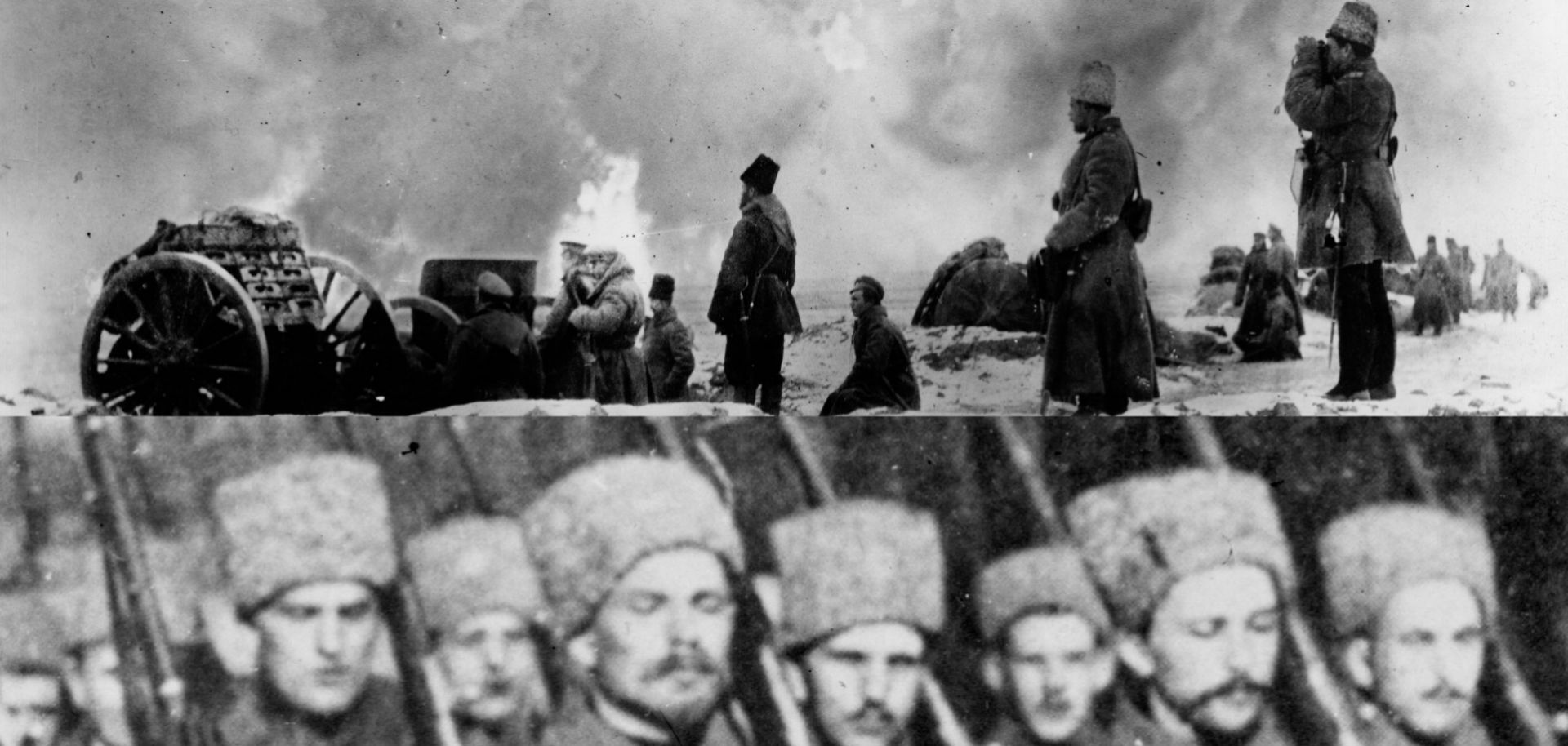ASSESSMENTS
World War I Retrospective: The Challenges of the Eastern Front
May 11, 2015 | 09:15 GMT

(Three Lions/Getty Images, Hulton Archive/Getty Images, Hulton Archive/Getty Images)
Summary
"The heavens granted our troops wonderful sunshine and dry roads" — German Gen. August von Mackensen, commander of the joint German 11th Army and Austro-Hungarian 4th Army, describing conditions as his troops prepared to launch an offensive to break the Russian 3rd Army lines in western Galicia on May 2, 1915.
Unlike the Western Front, which was static for much of World War I, the Eastern Front was mostly dynamic, as Germany and its ally, Austria-Hungary, fought the Russian Empire across battle lines that moved back and forth hundreds of miles at a time. In a pattern repeated throughout the war, Germany's 1915 offensive aimed to protect its weakened Austro-Hungarian ally and reverse Russia's 1914 territorial gains.
As with Napoleon's invasion of Russia more than 100 years earlier and Nazi Germany's invasion nearly three decades later, the region's flat geography, harsh winter weather and difficult logistics played a critical role in shaping the fighting on the Eastern Front. Underdeveloped road networks, inadequate supply lines, poor planning, and — in the case of the Russians — very limited pre-war ammunition stockpiles led to significant problems for both sides fighting around the Carpathian Mountains in the winter of 1915. The lessons of the Eastern Front remain as relevant now as they were then.
Subscribe Now
SubscribeAlready have an account?
